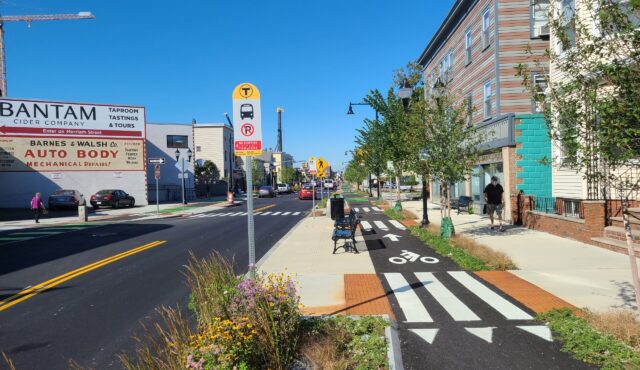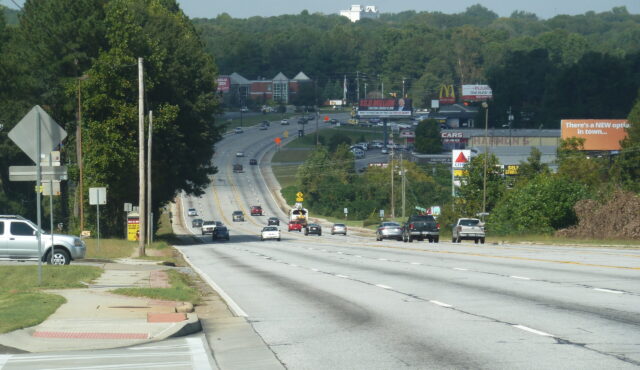It’s National Engineers Week 2019!
At Toole Design, our team of more than 50 design and engineering professionals work every day to make streets better for people of all ages and abilities. This week, we are celebrating their work by walking you through the design process, showing the process of taking a multimodal transportation project from concept to construction.
Developing Design Guidance
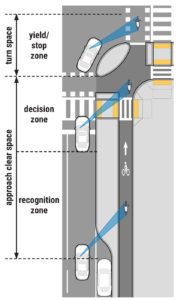
When engineers sit down to design great streets, they hit the books. Inspiring ideas and information from field visits are brought back to office for the first step in the design process, which starts by reviewing the applicable design manuals and guidance documents. Local, state, and national standards and manuals inform how every engineer approaches a given design project. And when a community wants to ensure that their streets serve all modes of transportation, they take a close look at their street design guidance to see if it reflects the kind of community they want to be.
Our approach to street design guidelines begins with the fundamental belief that streets should be safe and comfortable for everyone, especially the most vulnerable road users. Great streets can support healthy and sustainable travel options for all ages and abilities, support the local economy, and provide a high quality of life for residents. Fortunately, not only do we get to use design manuals that support these outcomes, we are also asked to develop them for many of our clients.
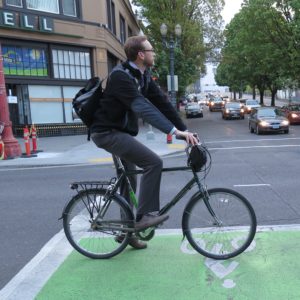
“With transportation constantly evolving in cities and communities, design guides that provide an understanding of the operational characteristics of all road users, pedestrians, bicyclists, and motor vehicle operators are essential,” says Jeremy Chrzan, P.E., PTOE, our Multimodal Design Practice Lead. “Effective guidance documents ensure that engineers and agency officials have a common understanding of the information they need to provide safe and comfortable mobility options for everyone. Regular updates to design guidance make sure that the streets of tomorrow are designed for the future based on lessons learned from the past.”
When MassDOT wanted to issue the best possible statewide guidance for designing and building separated bike lanes, we developed comprehensive guidance for designers across the state to help them make effective decisions when designing for any context. Using extensive illustrations, the Separated Bike Lane Planning & Design Guide provides comprehensive instructions for delivering safe, comfortable, and connected low-stress bicycle facilities in a wide variety of roadway, intersection, and operations scenarios.
Learn More About Design Guidance Download the MassDOT Guide
Creating a Concept
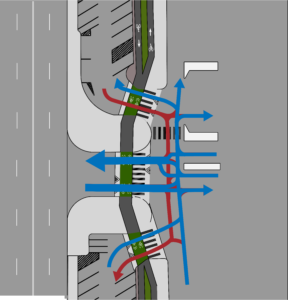
The first real picture of what will eventually appear on the ground is a concept or conceptual design. Equipped with information from field work and relevant design guidance, engineers develop a conceptual design based on all the contextual information they’ve gathered and the overall vision of the community. Public engagement is vital at this point in the process, and we often plan for interactive meetings during the concept phase, so that engineers, planners, and the people they serve can share ideas and refine the vision.
For multimodal transportation projects, the concept design is the first place where project staff, stakeholders, and the general public begin to explore the choices necessary to build streets that work for everyone. Engineers look at the existing conditions, any physical or legal constraints, the overall location and context of the project, and then use their knowledge of design guidance to sketch a street or public space that balances the needs of all road users. This first illustration offers a sense of scale, cost and impact of the project and gives community stakeholders the chance to react and see that their input has been heard.
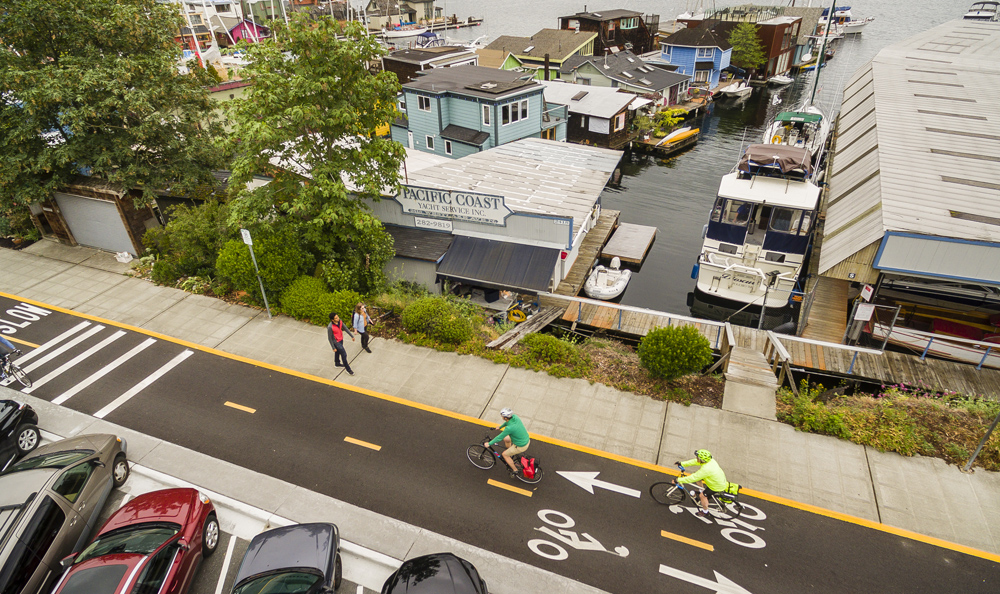
Concept drawings don’t always become a reality – they represent the very first vision of what could be, and undergo numerous changes between preliminary and final design to get to construction. Sometimes, the concept looks nothing like the final product at all, simply because there are so many places where the designs can be modified to deal with conditions on the ground. The purpose of a concept design is to envision a way to achieve the community’s goals. and start considering how to make it happen.
In Seattle, WA, a lot of bicyclists would ride through a busy parking lot on Lake Union in order to avoid a hillier inland route – even though there were bike facilities on the hillier roads. The Westlake Avenue corridor is filled with marina residents and businesses and serves as an important freight and transit route, as well as being a direct link between two major city neighborhoods.
To balance the needs of all users, and meet demands for access, safety, and connectivity for people traveling to and through the corridor, we worked with the community on a year-long public outreach and engagement effort. The existing conditions were well documented in surveys, traffic studies, and a parking utilization analysis.
There were some tough conversations and passionate participants, but in the end, the concept design helped chart a path forward that balanced the needs of all road and parking lot users. The result, built in 2016, was named that year’s” best new bike lane” in the U.S. by People for Bikes.
Learn More about Conceptual Design Read why the Westlake Cycle Track is award-winning
Designing for Every User
With the concept design in hand, it’s now time to get into the details. Engineering projects typically work towards milestones for 30, 60, 90, and 100% design plans, with the level of detail increasing at each successive stage. These stages allow for the designers and engineers to ensure compliance with local and national design standards, account for all the utilities, access, and geometric conditions on the ground, and ensure that the key elements of the concept design are carried through into the final project.
The detailed design stage is where an experienced multimodal design team is especially valuable. Engineers that understand the needs of people walking, biking, and driving are best suited to balance those competing needs when designing for a project. Here, Toole Design engineers like Kenneth Loen, P.E. ENV. SP, and Craig Schoenberg, P.E. are thinking about curb radii that slow drivers and give ample space for people walking and biking. They’re ensuring ADA compliance on curb ramps and checking transit ridership before determining the length of floating bus islands.
Our team led the 30% design of the 2nd Ave. Extension in Seattle, where this eye for detail came in especially handy. With numerous intersections, hotel pick-up and drop-off zones, and garage access points creating the potential for conflict between people riding bicycles and driving, creating an intuitive facility that clearly communicates right of way in the design was essential.
When it was completed in 2018, the 2nd Ave Extension added nearly a mile of protected bike infrastructure to a previous demonstration project, creating a 13-block corridor connecting to three other protected bikeways in the downtown area. It was named PeopleForBikes’ Best New Bike Lane of 2018.
Learn more about our roadway design work Check out the details in the 2nd Ave Extension
Finalizing the Details
With the last rounds of revision, permitting, and quality control wrapping up, the design process is close to the finish line. Getting the design documents ready for bidding and construction requires even more attention to detail. In the final design phase, the engineering team makes final adjustments based on feedback from the 60% design, adding all of the remaining details that will to turn these plans into reality.
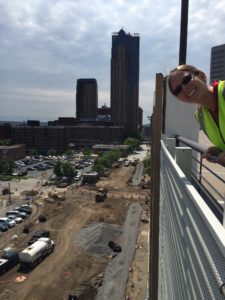
Construction documents can be extremely complex, and account for the wide variety of work needed to construct the project: things like earthwork, pavements, and utility adjustments, drainage, and traffic control. Engineers must consider not only the features and functionality of the project, but also the materials of construction and cost of every single element being constructed.
For engineers like KC Atkins, P.E. our Director of Engineering for the Midwest, the level of detail and the variety that comes with every project is part of what brought her to the field in the first place. “My mentor was a mechanical engineer, and she inspired me to explore the field and ultimately decide to pursue a career in civil engineering.”
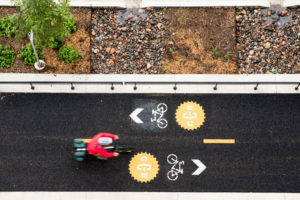
KC was the project manager for the complete reconstruction of Jackson Street in Saint Paul, MN, where we helped the city create a cornerstone project that sets the tone for the rest of their downtown bicycle network and multimodal transportation spaces. “I joined Toole Design because as an engineer, I feel strongly that we have to make our spaces work as efficiently as possible,” said KC. “People need to move, and it’s our job to create comfortable spaces for efficient modes so the whole transportation system functions more effectively.”
Today, Jackson Street does just that. With dedicated spaces for people walking, biking, and driving, everyone using the street has a place to travel as they need to. Collaboration with our landscape architects yielded some innovative drainage solutions, like permeable pavement and low-impact drainage design. KC is keeping the mentorship tradition alive as well, introducing high school interns to engineering through a program between our Minneapolis office and the local YWCA.
Explore Jackson Street Discover More about Final Design & Construction Documentation
Coordinating Construction
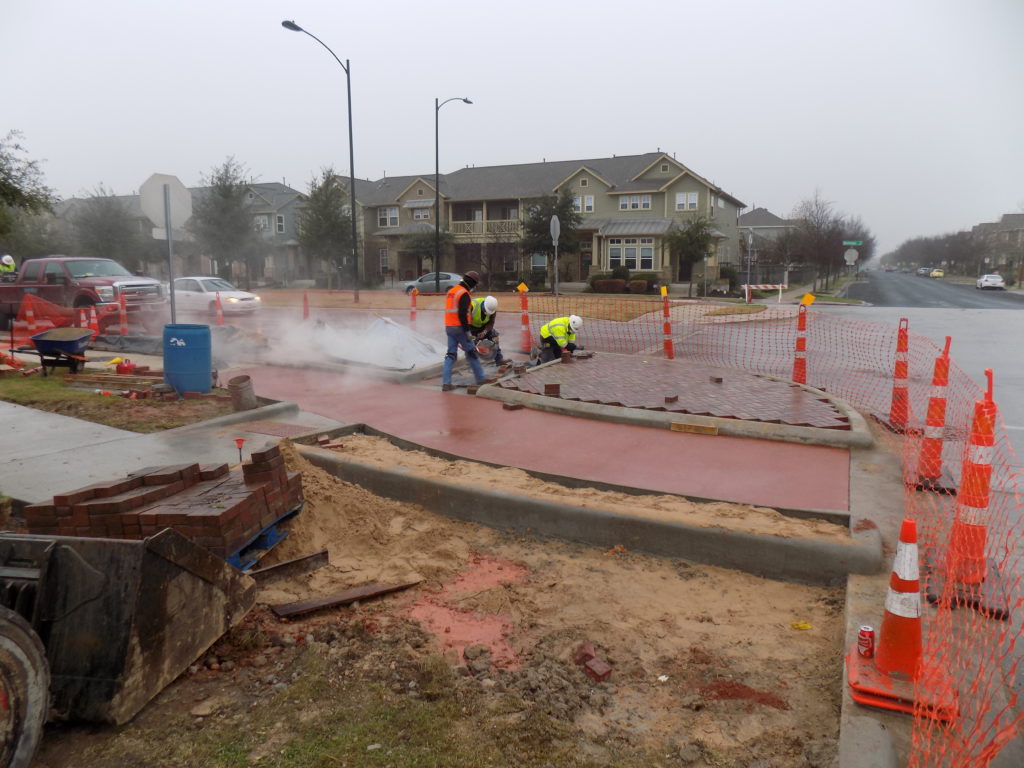
Once the construction documents are approved and sealed by a licensed Professional Engineer, they are ready for bidding by contractors. With a high-quality design and accurate quantity calculations, the bid price and the engineer’s opinion of probable cost should be very close. Bids are analyzed to make sure they’re accurate and the contractors have the qualifications to perform the work. The most appropriate contractor is then selected for the job.
Now it’s time to construct! In Austin, TX, the city worked hard in advance to set up a program where multimodal streets are designed and built through a unique contracting arrangement. Our team was selected to be the in-house design support staff to Austin Transportation Department’s street design staff. Led by Sean Corcoran, P.E., our staff of planners and engineers, including Carly Haithcock, EIT and Tyler Wong, EIT, develop design concepts and move them through construction. Once final design is complete, the city has a bench of construction contractors to get these projects in the ground quickly.
In the construction phase, our engineers spend time in the field coordinating with the contractors and performing inspections. This happens frequently, with multiple check-ins on every project. Our Austin team often refers to it as #FieldWorkFriday. During the construction phase we also review and approve contractor submittals (things like material samples and detailed shop drawings) and verify the completed work conforms with our plans and specifications. We also answer contractor questions and perform design changes as unforeseen site issues arise.
If you like the idea of designing safer streets and building them right away, we’ve got two open positions on our Austin design team – join us and get to work constructing facilities that move people.
Learn more about our engineering team in Austin Find our more about construction administration services
